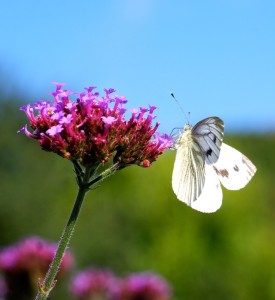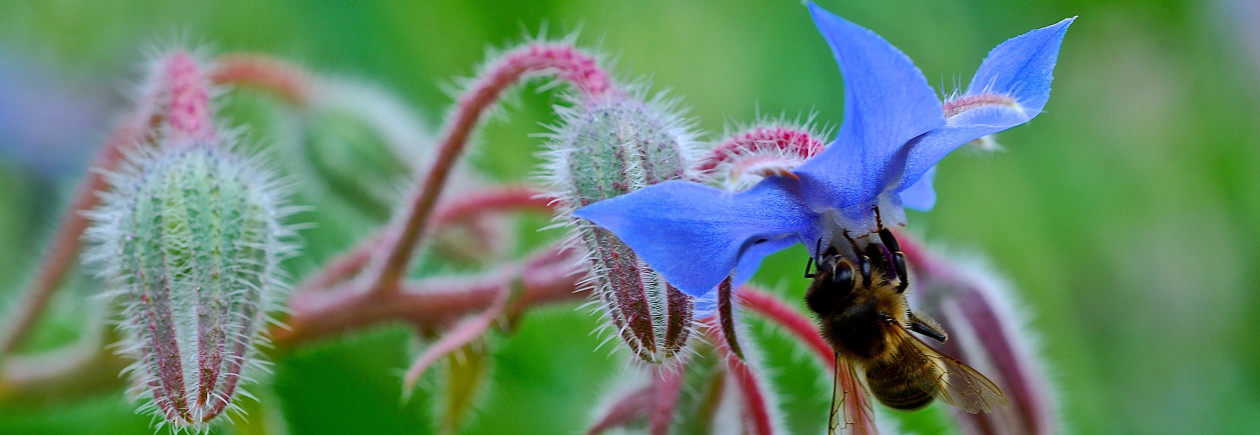I get a lot of questions here at Learn How To Garden from subscribers and viewers. I had an interesting one recently from Ginny that’s very timely . Here’s Ginny’s question:
“I’ve just bought some hardy perennials, ‘Viola Odorata’ to grow among my brassicas. I read (or it could have been a dream!!) that growing white Viola make cabbage white butterfly’s think there are already lots of cabbage white’s on the brassicas and so they don’t bother to lay their eggs.”
It’s a really interesting question and that you post because what you’re attempting to do is actually confuse the butterflies that lay their eggs on your brassicas by presenting a visual mimicry to confuse the Cabbage White Butterflies and its a different type of companion planting because normally companion planting masks the scent of the vulnerable plant or actively produces chemicals that repel certain insects.
Insects normally are attracted to their host plants via scent, which is why carrot root fly for instance can smell carrots for up to a mile away and you’re much more likely to get the attack of carrot root fly after you’ve thinned your carrots because the carrots releases scent into the air.
In the case of Brassicas when the butterflies are closer to the host plants ie. cabbage they use visual identification of the plants that they are going to use as hosts by the actual shape of the leaves.
CONFUSING THE ENEMY


Viola Odorata “ALBA” flowers look very very similar to cabbage white butterflies so if the cabbage white butterfly’s see what appears to be a large amount of cabbage whites then the theory is they don’t lay their eggs because then their eggs, once hatched, would be competing against all the other caterpillars. Genetically it makes more sense therefore to find another host plant to lay your eggs on with less competition.
I never planted like this myself but I have read about it and it’s something I remember seeing years and years ago as a child. Violas would be grown underneath Brussels sprouts which of course grow much taller, the Violas themselves are quite happy to grow in the shade.
I think it’s certainly an interesting experiment and one that I will probably do myself and of course the positive is that even if it didn’t actually work you’re still left with an absolutely stunning perennial plant
Violas will give you the most beautiful scented flowers and their flowers are edible you can sugar them and they make absolute superb decorations and who doesnt know the taste of ‘Palma Violets’.
scented flowers and their flowers are edible you can sugar them and they make absolute superb decorations and who doesnt know the taste of ‘Palma Violets’.
They can also be used in cakes and ice creams. The fragrance of Violets is a major component in perfumes and surprisingly you can even get Violet scented ink!
GROWING VIOLETS
Violets are perennials that form a mat of roots and grow to about 10cms high and can eventually cover 50cms.
They live for between 2-5 years but tend to flower less after 3or4 so are best divided and sections from the outside of the plants replanted.
The best time to do this is in the Autumn, gently dig out the plants then insert two forks back to back and prize them apart before replanting into soil with leafmould of garden compost incorporated
You can also grow Violets from seed and this is best sown in the Autumn either October or November in a 50/50 mix of compost/perlite and keep in a cold frame until spring then prick out the seedlings and grow them on
Alternatively you can sow in spring but you may need to subject then to stratification
They will grow in most situations but prefer a moist but well drained soil so most vegetable beds suit them perfectly, or work in some compost or well rotted manure if growing in a flower border.
They are not fussy as to soil type or PH growing in both acid and alkaline situations and you can prolong flowering by deadheading but this can be laborious
If growing between brassicas I would plant then about 20cms apart in the gaps between your plants
Each month at Learn How To Garden Dot Com we'll publish a monthly video sharing gardening tips, how-to-dos and what-to-dos. Only subscribers will get access to these exclusive videos - all it will cost is your email address!
Please fill in your name and email address below and hit the submit button. You will get an email telling you when the latest Newsletter is available and notices of any new videos.
